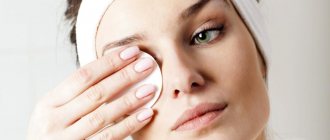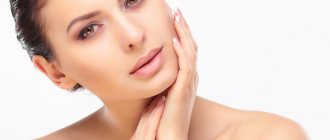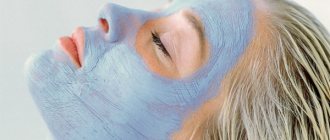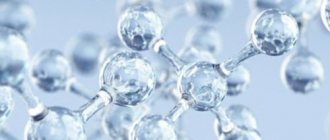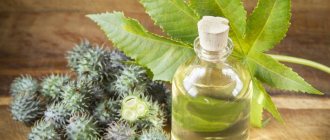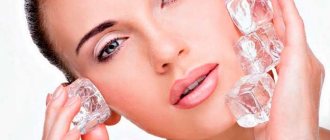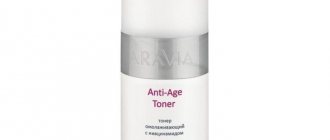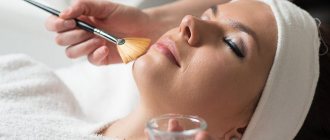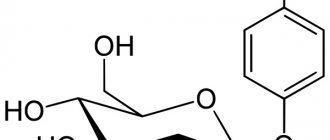Home » Face
Category: Face
There are a few key players in acne and acne treatments that you should be aware of, and salicylic acid is at the top of that list. Simply put, salicylic acid is one of acne's biggest enemies. But, what exactly does salicylic acid do, and what are the best ways to reap its benefits? To find out, we consulted dermatologists to help figure out exactly how salicylic acid works on the skin, who should (and shouldn't) use it, and why it's such a popular choice for preventing acne.
- What is salicylic acid?
- The benefits and harms of salicylic acid for the face
- How to properly use salicylic acid on the face
- The use of salicylic acid for different types of facial skin
- How to use salicylic acid on the face
- The best salicylic acid creams for the face
- The best salicylic acid face masks
- The best lotions and toners with salicylic acid for the face
- The best peelings with salicylic acid for the face
What is salicylic acid
This substance is from a group of compounds called salicylates. Salicylic acid is a type of phenolic acid and beta-hydroxy acid and is in the same class of drugs as aspirin, although it is used differently.
Salicylic acid is colorless and odorless. The structure allows it to be oil soluble, which means it can penetrate the lipid layers of the skin. Salicylic acid is considered a keratolytic because it clears bacteria and oil from pores that can cause clogged pores, causing blackheads and pimples. Salicylic acid is able to break the bonds between epidermal cells, acting as a natural exfoliant that removes the stratum corneum of the skin, making its surface smoother.
Indications
Salicylic acid can be used as monotherapy and complex action. In both cases it is able to treat the following conditions:
- Psoriasis.
- Ichthyosis.
- Seborrhea.
- Warts.
- Pimples.
- Acne.
- Burns.
- Wound surface.
- High sweating of the lower extremities.
- Calluses, corns.
- Hair loss.
- Thickening of the stratum corneum of the epidermis.
Skin exfoliation
While other antiseptics may only kill bacteria that cause acne and other problems, salicylic acid is one of the best products for removing dead skin cells and smoothing the skin. As a type of keratolytic, it has the ability to improve skin texture by exfoliating, reducing roughness and stimulating cell turnover. We have already talked about how to exfoliate with salicylic acid.
Pharmacology
Salicylic acid can be bought at a pharmacy and has the following properties:
- has an antibacterial effect;
- reduces inflammation;
- relieves itching and swelling of tissues;
- helps cleanse infected and purulent wounds, suppresses pathogenic microflora;
- regulates the activity of sweat and sebaceous glands (narrows pores, accelerates the outflow of sebum);
- penetrates deeply into the layers of the skin;
- has a keratolytic effect, gently exfoliates keratinized areas and promotes rapid tissue regeneration;
- used as a local distraction and irritant.
Treatment of warts
When applied as a cream, ointment, lotion, or patch, salicylic acid can help remove warts by exfoliating the skin and promoting the growth of healthy skin cells. Experts recommend starting treatment for warts with medications containing salicylic acid. They have minimal side effects, are sold without a prescription and are inexpensive. Products containing salicylic acid should not be used on genital and anal warts, as well as growths from which hair grows.
Compound
The alcohol solution is a colorless liquid with a characteristic odor. Per 100 grams of the finished medicinal product there are from 1 to 2 grams of salicylic acid, which are diluted with 70% ethyl alcohol until the required volume is obtained. The concentration of the finished product is 1% or 2%, respectively.
A highly concentrated drug is available with a salicylic acid content of 5 or 10 grams per 100 grams of finished medicine (5% and 10% alcohol solution or ointment).
Ointment is a white fatty substance based on petroleum jelly, mainly 2 or 3%, less commonly found in a concentration of 5 or 10%.
Side effects
Can salicylic acid be harmful to certain skin types? Alas, yes. If you have sensitive skin prone to dryness and redness, this product will not be the best choice, especially for frequent use.
Salicylic acid may cause side effects (especially when first used), including irritation, dryness, itching, peeling and redness. Such complications most often occur with excessive use or application to large areas of skin.
Salicylic acid products are not recommended for pregnant women or anyone taking blood thinning medications. Products containing salicylic acid should also not be applied to the mucous membranes of the mouth, eyes, damaged skin, or moles.
Interaction
The pharmaceutical agent increases the permeability of the skin to other drugs for external use, thereby enhancing their absorption.
Absorbed salicylic acid provokes negative effects:
- sulfonylurea derivatives
- antidiabetic drugs
- methotrexate
The solution cannot be used in conjunction with Resorcinol, zinc oxide.
Salicylic acid can be purchased without a prescription from your doctor. The medicinal solution can be stored for 3 years, and the ointment for 2 years.
How to use salicylic acid products
Currently, various salicylic acid products are available in pharmacies and cosmetic stores. This:
- Means for washing and cleansing facial skin from acne. Such products are often intended for daily use. Some dermatologists recommend looking for products that contain a mixture of different acids to achieve the best results.
- Ointments or creams that are applied pointwise to acne or the resulting spots on the skin. Look for products that contain about 2% salicylic acid. This is the optimal concentration for home care.
- Body washes. Acne can form not only on the face, but also on the back, chest, etc.
- Salicylic acid shampoo used to reduce scalp dandruff.
- Wipes and patches that are applied to the skin, including the scalp.
Most skin care products are available over the counter in concentrations ranging from 0.5% to 2% salicylic acid. Dermatologists also offer professional treatments such as salicylic acid peels. They use drugs in which the content of this substance reaches 20-30%.
Products for treating warts on thicker skin range from 17% to 40%. Such drugs must be used with caution, as side effects cannot be ruled out. Always read the instructions carefully. Treatment for warts usually takes up to 12 weeks. Some products are applied to pre-steamed skin once or twice a day for several weeks until the wart disappears. Before treatment, the skin with a wart can be rubbed with a pumice stone.
Can salicylic acid be used every day? Depending on your skin type and condition, products with this substance can be used from several times a day to several times a week. If you don't have sensitive skin and only apply a small amount (ideally along with moisturizer), you should be able to tolerate daily use. However, if you notice that your skin is becoming dry and irritated, take a break for a while.
It is best to use a small dose of the product at first and then gradually increase it as your skin gets used to it. When applying twice daily, be sure to use a gentle cleanser and moisturize your skin to help prevent excessive dryness and flaking. To avoid side effects, apply salicylic acid only to areas of the skin that are prone to pimples and acne.
Expert tips for treating acne
26.02.2021
When it comes to finding the right acne , there are a million different products available, from cleansers and gels to creams and even special patches. Because of this, it is often difficult to decide which of these tools is best suited for a particular situation.
However, what is even more depressing is the fact that acne does not go away with age. Everyone thinks that acne will stop after the last call, but in reality this is not the case. In fact, they appear even after 50 years. And often, the older a person is, the more difficult it is for him to deal with skin rashes. Experts talked about the most useful methods for treating acne .
Why do pimples pop out?
Acne occurs when oily and dead skin cells come together, causing a plug to form that clogs the pores. Usually the skin gets rid of them naturally. But according to the American Academy of Dermatology, when the body produces too much sebum, dead skin cells become stuck in the pores.
There is no single solution to get rid of acne .
Each person responds differently to treatment, and sometimes the skin condition can get worse before it gets better.
In this regard, the best solution is to contact a specialist.
He will be able to select an individual course of treatment for acne , depending on the reasons behind their appearance on the skin.
This is not at all as scary as it seems at first glance. At the beginning , the doctor will determine the severity of the acne and assign it a “grade” (from one to four).
This way, the specialist will find out which treatment is best for the patient: local or internal (or possibly both).
Who cares?
The topical form of treatment is the most common type of acne .
The main goal is to kill the bacteria that causes acne or reduce sebum production.
acne treatment ingredients may include products with retinoids, antibiotics, or salicylic acid (more on these below).
acne treatment involves medications that must be taken orally.
They come in many types. Antibiotics can kill bacteria and reduce inflammation; Birth control pills can help with hormonal problems, and isotretinoin is suitable for serious conditions.
Here are the most effective substances that will help fight skin rashes.
Salicylic acid
It is the ideal and most common substance. If you go to the pharmacy, you can find it as an active ingredient in a lot of acne .
Salicylic acid can gently exfoliate dead skin cells.
Salicylic acid also has some anti-inflammatory properties.
But keep in mind: if you use it too often, it can make your skin dry.
Thus, it is advisable to use only one salicylic acid-based product for daily use.
Glycolic acid
It exfoliates the skin well and gets rid of dead cells that can clog pores.
Like salicylic acid, glycolic acid can be found in cleansers, peels, moisturizers, gels and serums sold in specialty beauty salons or local pharmacies.
Retinol
Everyone has probably heard that retinol-based cream is used as an anti-aging agent. But not many people know that vitamin A can be good for acne . Since this substance helps stabilize sebum production.
In addition, acne is an inflammatory process, and retinoids are an excellent anti-inflammatory agent.
Experts often recommend them to people prone to acne . When compared with other methods of combating acne , one more undoubted advantage can be identified - retinoids not only treat acne , but also prevent their appearance.
However, it is worth remembering that retinoids can sometimes cause irritation. If your skin is sensitive, the retinoid may be too strong.
In any case, no matter what drug is used, it will take some time to get results.
Published in Cosmetology Premium Clinic
